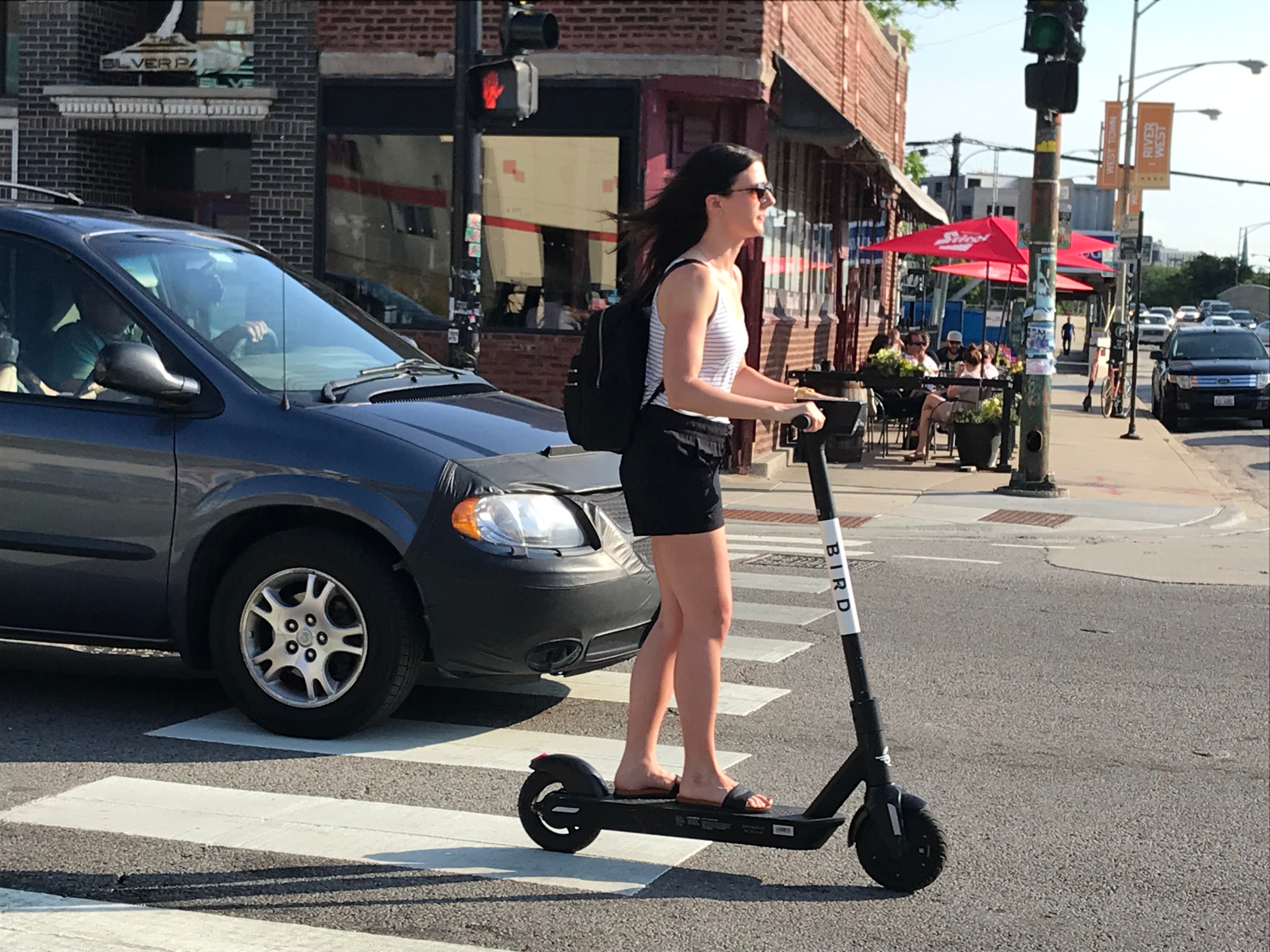Last week I tried out a few dockless electric scooters in the Chicago pilot area in the West Loop near the CTA's Morgan 'L' station. With ten different companies participating in the program, for a total of 2,500 scooters, I had a plethora of options. and since the West Loop is a hub for young tech professionals, a target demographic for scooters, I wasn't surprised to find that there were plenty of the vehicles available what seemed like every street in the neighborhood.
I downloaded the VeoRide, Lime, and JUMP (owned by Uber) apps and decided to test-drive a scooter from VeoRide, the one Chicago-based company in the pilot. [Watch a "Chicago Tonight" discussion of the pilot with Veoride CEO Candice Xie and Streetsblog's John Greenfield here.] As someone who is used to walking, biking, and taking transit, riding a scooter is not on my normal list of options, but I was curious if it could become something I could add to my mobility toolbox.
It was fairly easy to unlock a scooter once I located a VeoRide vehice. I used the $5 credit code attached on a paper to the scooter. I unlocked it using the QR code.
Actually getting started scooting was the difficult part for me. It seems each scooter has its own peculiarities, and took me a moment to figure out that I needed to kickstart the device without letting go of the throttle. When I first got going, it didn't feel smooth, stable, or secure. According to a recent safety study in Austin, Texas, one out of three scooter injuries happened on a user's first trip. I can easily see why that's the case, because there's definitely a learning curve. There was a ton of scooter riders on the Randolph Street restaurant district near where I started my ride, so that made it slightly less intimidating.
I’m used to powering and controlling my own movement on a bike, so scooter riding does not come naturally to me. It’s hard to turn over most of the control to the scooter. I did enjoy riding on Lake Street since there were painted bike lanes and less car traffic. Still, I felt less confident riding in bike lanes with no physical separation from cars than I would have on my bike.
Most of the companies are charging $1 to unlock a scooter plus 15 cents per minute in Chicago. That can quickly add up: A ten minute trip at up to 15 mph, covering no more than 2.5 miles, costs as much as a ride on the 'L'. So I question how accessible scooters are to low-income Chicagoans. The rules of the pilot also require the companies to provide a way for unbanked people and those without smartphones to use their product, but there's no evidence that this is actually an option yet in Chicago. For example, a Google search for "How to use a VeoRide scooter without a smartphone in Chicago" turned up no obvious answers.
I still want to be open-minded about scooters because some have found them to be useful and enjoyable. I also haven’t tried all of the scooter models yet, so I’m sure there are variations in how they feel. In addition to VeoRide, I tried a JUMP scooter and it did feel smoother, at least starting out. On Randolph Street, I saw a group of young people who seemed to be having a lot of fun.
I think the biggest issue with scooters right now is the lack of car-free lanes and paths where they, along with bikes and other personal mobility devices, can be ridden safely, particularly on the West and South sides. From the scooters I have tried, I also think the technology itself has to be tweaked to ensure a smooth start and safe stopping. Once you've unlocked a scooter, I don’t think it’s intuitive how to use it. It takes some trial and error, and a busy street may not be the best place for a test-drive. I think scooter companies need to invest in more education because simply putting scooters on the street is not sufficient. Car driver education is so embedded in our society, but we don’t invest much in helping people learn to safely use other forms of mobility.
For now, I’ll happily stick to my bike. By after the four-month pilot ends on October 15, we’ll see if scooters have a future in Chicago.





